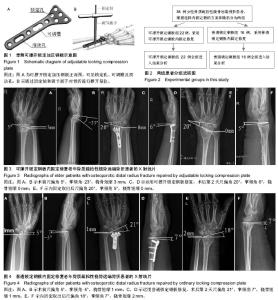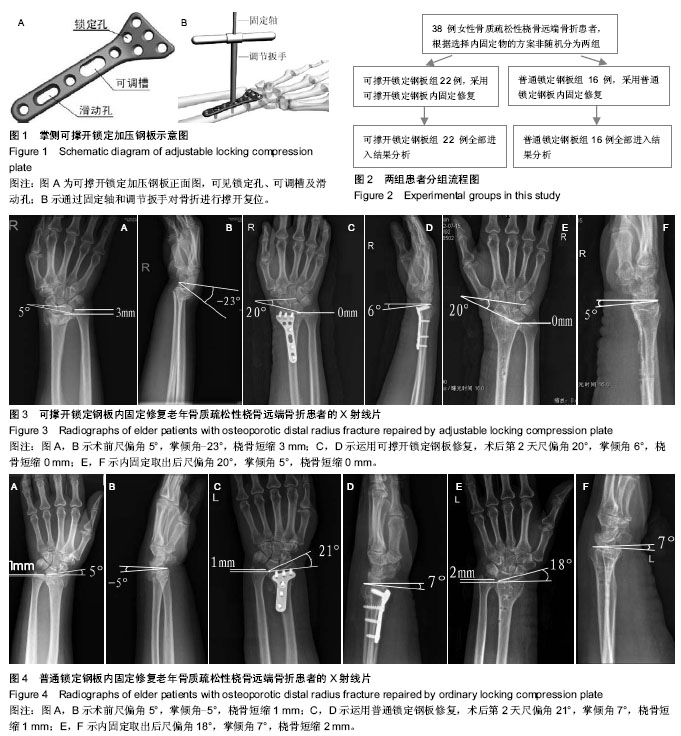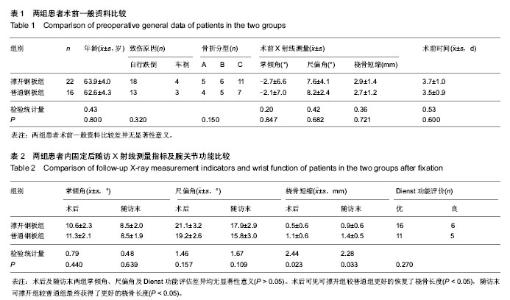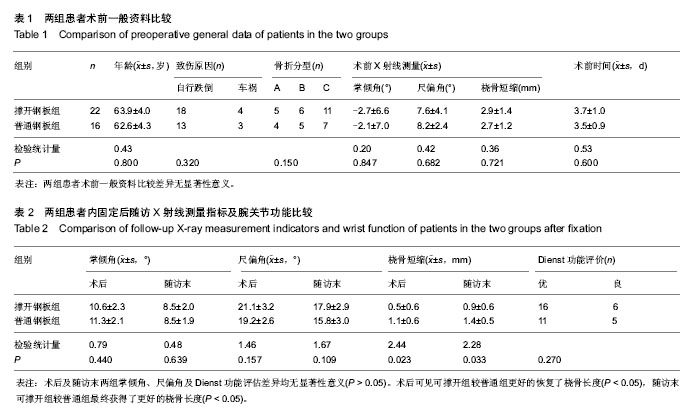| [1] 高天君,杨达宇.比较切开复位内固定和石膏固定治疗老年骨质疏松性桡骨远端骨折对患肢继发性骨质疏松和关节功能的影响[J].中国骨质疏松杂志,2012,18(3):245-247.
[2] 庞启雄,张朝驹,白红军.切开复位内固定以及手法复位石膏外固定法在治疗老年骨质疏松性桡骨远端骨折效果及其对骨质疏松的影响评价[J].海南医学院学报,2013,19(11):1562-1565.
[3] 姜保国.桡骨远端骨折的治疗[J].中华创伤骨科杂志,2006,8(3): 236-239.
[4] Arora R, Lutz M, Deml C, et al. A prospective randomized trial comparing nonoperative treatment with volar locking plate fixation for displaced and unstable distal radial fractures in patients sixty-five years of age and older. J Bone Joint Surg Am. 2011;93(23):2146-53
[5] 谭加群,李建赤,梁江声,等.锁定加压钢板治疗骨质疏松性桡骨远端骨折[J].中国骨质疏松杂志,2010,16(3):194-196.
[6] 张屹,杨拓,李辉,等.掌侧与背侧入路钢板置入固定修复桡骨远端骨折并发症的Meta分析[J].中国组织工程研究,2014,18(22): 3560-3566.
[7] Clayton RA, Gaston MS, Ralston SH, et al. Association between decreased bone mineral density and severity of distal radial fractures. J Bone Joint Surg Am. 2009;91(3): 613-619.
[8] 安宝泉,杨玉平,苏恩亮,等.非手术治疗Colles骨折桡骨长度丢失的研究[J].中国骨与关节损伤杂志, 2012, 27(11): 1042-1042.
[9] 李夏,王秋根.桡骨远端骨折手术与非手术治疗[J].国际骨科学杂志, 2013,34(1):23-25.
[10] Mudgal CS, Jupiter JB. Plate fixation of osteoporotic fractures of the distal radius. J Orthop Trauma. 2008;22(8):106-115.
[11] 陈长青,陈蕊,伦保国,等.两种固定方法治疗桡骨远端不稳定骨折40例效果比较[J].解放军医药杂志,2013,25(3):22-24.
[12] 张文才,阳晟,程英雄,等.掌侧锁定加压钢板治疗桡骨不稳定远端骨折的回顾性研究[J].中国骨与关节损伤,2010,25(5):405-407.
[13] 金建强,张骏,陆逸庭.等.解剖型桡骨远端掌侧锁定接骨板治疗老年桡骨远端骨折[J].中医正骨, 2013,25(12):66-68.
[14] Dahl WJ, Nassab PF, Burgess KM, et al. Biomechanical comparision of different volar fracture fixation plates under dynamic loading. J Hand Surg Am. 2012;37(7):1381-1387.
[15] Rhee PC, Dennison DG, Kakar S. Avoiding and treating perioperative complications of distal radius fractures. Hand Clin. 2012;28(2):185-198.
[16] Demirbas ER, Ugras AA, Kaya I. Volar plate fixation of distal radius fractures. Ulus Travma Acil Cerrahi Derg, 2012;18(2): 162-166.
[17] 舒敏锐,李刚,袁晓军,等.锁定钢板内固定结合自体植骨治疗老年桡骨远端骨质疏松性骨折的效果观察[J].中国当代医药,2014, 21(4): 164-165.
[18] Tarallo L, Adani R, Mugnai R, et al. The treatment of distal radius articular fractures of C1-C2 type with DVR plate:analysis of 40cases. Musculoskelet Surg. 2011;95(3):225-230.
[19] 张智海,刘忠厚,李娜,等.中国人骨质疏松症诊断标准专家共识(第三稿•2014版) [J].中国骨质疏松杂志,2014,20(9): 1007-1010.
[20] Qu Y, Xu J, Jiang T, et al. Unstable Distal Radius Fractures: Restoration of the Radial Length with Use of Special Palmar Fixed-angle Plate. Handchir Mikrochir Plast Chir. 2013; 45(1): 1-5.
[21] Dienst M,Woxasek GE,Seligson D. Dynamic external fixation for distal fractures. Clin Orthop. 1997;338(1):160.
[22] 苑文杰. 锁定钢板治疗桡骨远端骨折36例疗效观察[J]. 临床和实验医学杂志, 2012,11(15):1232-1233.
[23] 刘勇,瞿懿,孙振中,等.影响桡骨远端骨折治疗效果的多因素分析[J].中国骨与关节损伤杂志,2013,28(9):834-836.
[24] 胡益文,易松敏,吴中和,等.桡骨远端骨折畸形愈合的原因及对腕关节功能的影响[J].中国骨与关节损伤杂志,2014, 29(3): 300-301.
[25] 王翔宇,郭亮兵.掌侧锁定加压钢板内固定治疗桡骨远端骨质疏松性骨折临床疗效分析[J].中国实用医刊, 2012,39(21):36-38.
[26] 薛理新,季宝兵,戴桂龙.导致桡骨远端骨折术后桡骨短缩的发生率及其危险因素分析[J].中国骨与关节损伤杂志, 2014, 29(1): 52-54.
[27] 唐开武.尺骨茎突骨折及分型对桡骨远端骨折术后临床疗效的影响[J].中国现代医生,2013,51(9):6-7.
[28] 姜保国,张殿英,傅忠国,等.桡骨远端粉碎性骨折及关节内骨折的手术治疗[J].中华骨科杂志,2002,22(2):80-83.
[29] 陆邦超,孟萍,黄姝,等.重庆市城区正常人群骨密度状况分析[J].第三军医大学学报,2003,25(10):910-912.
[30] 季志民,马亚红.北京城区居民骨密度随年龄变化的特点-3285例骨密度测定结果分析[J].中国骨质疏松杂志,2011,17(8): 687-690.
[31] 张施展,蒋林,简小飞,等.鲑鱼降钙素联合手术治疗骨质疏松性桡骨远端背侧不稳定性骨折对患者术后疗效及骨密度改变的分析[J].中国骨质疏松杂志,2013,19(8):812-858.
[32] 陈旸,程涛,徐峥宇,等.骨质疏松症对老年桡骨远端不稳定型骨折术后功能和影像学结果的影响[J].中国骨质疏松杂志,2013, 19(4): 371-374. |



